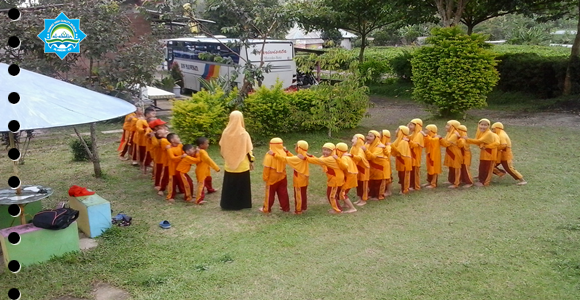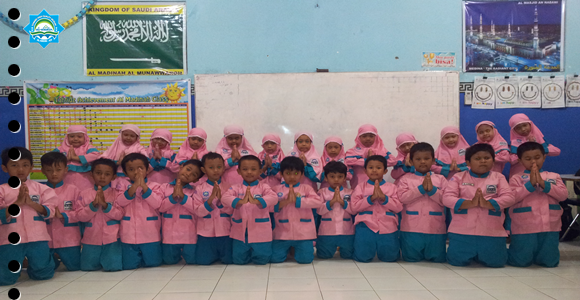Introduction
Every sentence has a subject and a main verb. Verbs describe what the subject is doing. To be able to show exactly what the subject does at any time, verbs have different forms and tenses. In order to speak and write English correctly, you must learn the various verb forms and tenses.Learning Hint:
To use verbs accurately, learn the standard verb forms and tenses. Memorize common irregular verb forms that do not follow standard forms.
Verb Forms
Verbs have five forms:| Form | Verb Example | Irregular Verb Example |
| Infinitive | walk | run |
| Past tense | walked | ran |
| Past participle | walked | run |
| Present participle | walking | running |
| -s or -es form | walks | runs |
| Form | Verb |
| Infinitive | be |
| Past tense | was (for I / he / she / it); were (for we / you / they) |
| Past participle | be, been |
| Present participle | being |
| -s / -es form | -- |
Infinitive Form The infinitive form is the plain or dictionary form. It is used when the verb's action happens in the present and the subject is a plural noun or the pronouns I, we, you, or they:
I go to work.
You cook very well.
We live downtown.
They help me.
Past Tense Form The past tense shows the verb's action happened in the past. It is usually made by adding -d or -ed to the infinitive. The past tense is formed differently for most irregular verbs:
We lived downtown.
They helped me.
I went to work. (Irregular verb)
Past Participle and Present Participle Form
The past participle is used with the verb have (have / has / had) to create the present and past perfect tenses. The past participle form is also used to modify nouns and pronouns. One example is the phrase sliced bread.
The past participle is usually the same as the past tense form. Only some irregular verbs have a past participle that is different than their past tense form.
We have lived downtown.
They have helped me.
I have gone to work. (Irregular verb)
The present participle is made by adding -ing to a verbs infinitive form:
Working
Buying
Eating
The present participle can modify nouns and pronouns. One example is the phrase running water. When used as a noun (example: smoking is bad), the present participle is known as a gerund. The present participle is also used to create the progressive tense.
-S Form
The -s form of a verb is made from the infinitive of the verb. This form is used when the verb's action is in the present and the subject is third-person singular. Third-person singular is a singular noun (examples: desk, John), or a singular indefinite pronoun (examples: everybody, someone), or the personal pronouns he / she / it.
How the -s form is made depends on the last letter of the verb:
| Verb Ending | To Make Third Person Singular | Example |
| s | add -es | Pass - It passes |
| sh | add -es | Wish - Everyone wishes |
| ch | add -es | Watch - She watches |
| consonant + y | change y to i and add -es | Try - He tries |
| Any other letter | add -s | Drink - He drinks |
Verb Types
Irregular VerbsMany verbs do not follow the rules to make the different forms. They are called irregular verbs. No single rule explains how to make their past tense and past participle forms. The irregular verbs must be memorized. These are some of the common irregular verbs:
| Infinitive | Past Tense | Past Participle |
| choose | chose | chosen |
| do | did | done |
| drink | drunk | drank |
| eat | ate | eaten |
| give | gave | given |
| forget | forgot | forgotten |
| lie | lay | lain |
| let | let | let |
| see | saw | seen |
| sleep | slept | slept |
| throw | threw | thrown |
| write | wrote | written |
Helping Verbs
Another important type of verb is the helping or auxiliary verb. Helping verbs show tense and can show person, number, voice or mood. These verbs combine with a main verb to form a verb phrase. A main verb is an infinitive, a present participle or past participle. These are verb phrase examples:
will give
has been working
can go
Some helping verbs combine with main verbs to show time and voice. These helping verbs are shall, will, have (has / had), do (does / did) and the forms of be (am / is / are / was / were / been / being):
| We will live downtown. | We did not live downtown. |
| They shall help me. | They were helped. |
| I have been working. | I had worked. |
Modal Verbs
Helping verbs such as can, could, may, might, must, ought, shall, should, will, and would are used to add extra meaning to main verbs. These helping verbs are called modals. They show a necessity, possibility, ability, permission, prediction or responsibility:
| You should write that report. | We must go. |
| He can carry heavy objects. | I might leave. |
| Does she work this week? | Do they go to school? |
| Where does he live? | Where did they live? |
| She does not sleep well. | She did not sleep well. |
| You do work every day. | He does run on weekends. |
Verbals
A verbal (nonfinite verb) is no longer a verb. It is a verb form used as a noun, an adjective, or an adverb. A verbal can never be a main verb.
| Verbal | Example | Verb Form |
| Noun | Running is great exercise. | present participle |
| Adjective | Blocked printers cannot print. | past tense |
| Adverb | We were ready to work. | to + infinitive |
Verb Tenses
Tense shows the time of a verbs action or being. There are three verb tenses: simple, perfect, and progressive. Each tense has past, present and future forms.Note: Because tense shows time, a time word in a sentence helps to decide what tense is being used. Most time words can only go with a certain tense. These are some examples:
| Present | Past | Future | Progressive |
| often | yesterday | tomorrow | now |
| every hour / day / week | last week / month | next week / month | today |
| every month/year | last year | next year | this month |
| usually | amount of time + ago | in + amount of time | for + amount of time |
| sometimes | |||
| today | |||
| for + amount of time |
Simple Tense The simple tenses show that an action or state of being is past, present, or future. The present tense shows action that is happening now as a person speaks or writes. The present tense is also used to describe actions that are factual or habitual (commonly repeated over a period of time). The present tense uses the verbs infinitive or the -s form for third person singular subject.
The past tense shows action that has finished as a person speaks or writes. The past tense uses the verbs past tense form.
The future tense shows action that has not happened yet as a person speaks or writes. The future tense uses the helping verb will or shall plus the verbs infinitive.
| Tense | Regular Verb: Walk | Irregular Verb: Run |
| Present | I / you / we / they walk. He / she / it walks. |
I / you / we / they run. He / she / it runs. |
| Past | I / you / we / they / he / she / it walked. | I / you / we / they / he / she / it ran. |
| Future | I / you / we / they / he / she / it will walk. | I / you / we / they / he / she / it will run. |
Perfect Tense The perfect tenses show that an action was or will be finished BEFORE another time or action happens. The perfect tenses are made with the helping verb have (have / has / had) plus the verbs past participle. All subjects use had for the past perfect tense. All subjects use will have or shall have for the future perfect tense. The infinitive have or has for singular third person is used for the perfect present tense.
Examples:
| Tense | Regular Verb: Walk |
| Present Perfect | I / you / we / they have walked. He / she / it has walked. |
| Past Perfect | I / you / we / they / he / she / it had walked. |
| Future Perfect | I / you / we / they / he / she / it will have walked. |
| Tense | Irregular Verb: Run |
| Present Perfect | I / you / we / they have run. He / she / it has run. |
| Past Perfect | I / you / we / they / he / she / it had run. |
| Future Perfect | I / you / we / they / he / she / it will have run. |
The present perfect tense can also show that an action started in the past and is still going on in the present.
Examples:
He has lived downtown. (Action is finished at the time it is written.)
He has worked for three hours. (Action started in the past and is still going on.)
She has always written in a diary. (Action started in the past but continues now.)
Progressive Tense The progressive tenses show continuing action. They can also show how long an action has been going on for an amount of time in the present, past, or future. A verb's present participle joins with some forms of the verb be (am, is, are, was, were) to make the simple progressive tenses.
| Tense | Example |
| Present Progressive | I am working. You / we / they are working. He / she / it is working. |
| Past Progressive | I / he / she / it was working. You / we / they were working. |
| Future Progressive | I / he / she / it / they / we / you will be working. |
He was doing his work. (He was working, but he may not have finished the work.)
The perfect tense form plus been plus the verbs present participle makes the perfect progressive tenses:
| Tense | Example |
| Present Perfect Progressive | I / you / we / they have been working. He / she / it has been working. |
| Past Perfect Progressive | I / he / she / it / they / we / you had been working. |
| Future Perfect Progressive | I / he / she / it / they / we / you will have been working. |
| be | guess | seem | see |
| believe | include | think | smell |
| cost | like | understand | taste |
| desire | love | want | need |
| doubt | remember | wish | have |
Incorrect: She is being pretty.
Correct: She is pretty.
Incorrect: That is owning to him.
Correct: He owns that.
Incorrect: They are wanting a raise.
Correct: They want a raise.
this article is taken from http://www.testden.com/toeic/grammar-verb-tense.html







